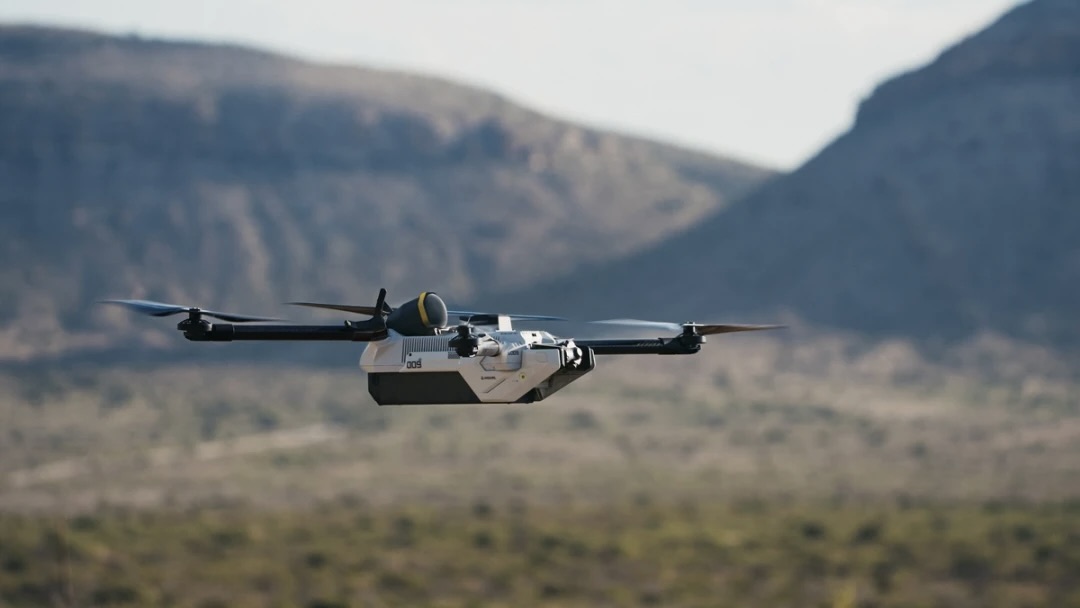
U.S. defense technology company Anduril has unveiled its new Bolt family of military drones powered by artificial intelligence (AI) — including one model equipped with "lethal precision firepower."
The drones have been developed for the U.S. Marine Corps (USMC) as part of an ongoing modernization program called Force Design. The system is a "man-packable, vertical takeoff and landing (VTOL) Autonomous Air Vehicle" that comes in two configurations — the Bolt and Bolt-M, Anduril representatives said in a statement.
The Bolt is the standard configuration of the drone, intended for use in surveillance and search-and-rescue operations, while the Bolt-M comes equipped with explosive munitions for active combat scenarios. It's effectively a "kamikaze" drone fitted with surveillance equipment and explosive ordinance. This lets the drone identify and fly into a target before detonating the payload.
Related: AI drone that could hunt and kill people built in just hours by scientist 'for a game'
The Bolt-M is compatible with a range of munitions packages from both Anduril and third-party manufacturers, with a maximum munition payload capacity of up to 3 pounds (1.4 kilograms). The system focuses on modularity and ease of use, enabling operators to swap between anti-personnel and anti-materiel warheads in the field based on "changing battlefield requirements," representatives added in the statement.
In the promotional video above, company representatives said the drone can be assembled and deployed in less than five minutes. It can also be launched from practically any location because it doesn't need any launch apparatus and has VTOL capabilities. The Bolt-M can fly for more than 40 minutes, with a range of 12.5 miles (20 kilometers), while the standard Bolt can fly for more than 45 minutes because it lacks a heavy payload.
Under the hood, the Bolt-M is controlled by a "tactical version" of Anduril's existing Lattice software platform. According to the statement, this AI-powered software drastically reduces the training and expertise needed to fly the drone, enabling human operators to find, track, and, if necessary, strike targets with minimal effort. This is in contrast with the first-person view drones currently being utilized by both sides in the Ukraine war, which require significant training and attention from their operators.
Another key feature is agnostic object tracking, which lets operators manually highlight an object by drawing a box around it — which instructs the drone to track it. This supplements the onboard computer's ability to identify typical battlefield objects, letting soldiers override the computer and instruct it to follow any threat they have identified. This isn't too dissimilar to the automatic tracking technology in consumer drones, such as the ActiveTrack mode found on the DJI 4 Mini Pro.
This comes in addition to autonomous waypoint navigation, which lets the operator set a flight path using the onboard GPS. The drone can be set on its path without requiring constant control or observation, letting humans concentrate as they traverse potentially hostile terrain.
The Bolt and Bolt-M were developed as part of the USMC's Organic Precision Fires-Light (OPF-L) program, in which eight companies competed to develop "precision fire systems" that could be used for smaller units like squads or platoons. Out of those eight companies, three were selected for contracts in April 2024 — AeroVironment, Teledyne FLIR and Anduril.
Anduril was co-founded in 2017 by a group of investors headlined by Palmer Luckey, the creator of the Oculus Rift virtual reality headset (the predecessor to the Meta Quest, which is among the best VR headsets out there).







